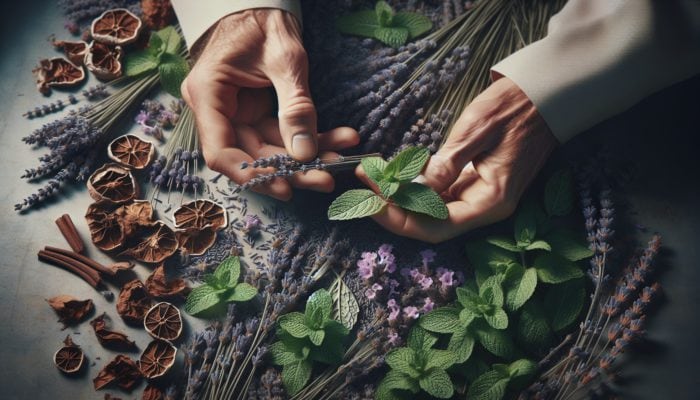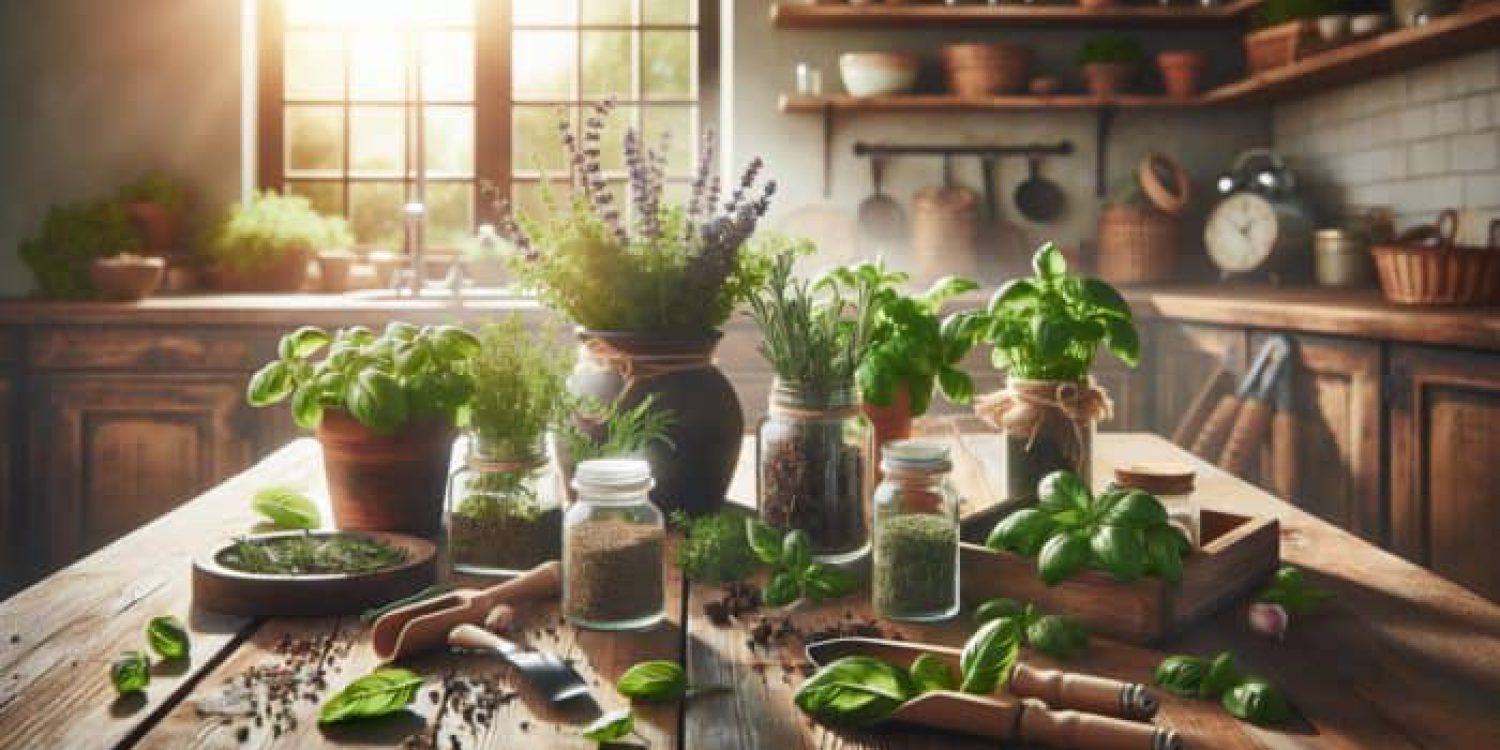Expert Tips for Choosing the Best Herbs for Your Herbal Remedies
Top Herbs Renowned for Their Healing Properties

How to Dry Herbs for Remedies: When considering how to dry herbs for remedies, it is essential to select herbs renowned for their therapeutic properties. In the UK, popular choices include lavender, chamomile, and peppermint. Lavender is adored not only for its enchanting aroma but also for its ability to promote relaxation and enhance sleep quality. Chamomile tea is a well-established remedy for digestive disturbances and anxiety, making it a staple in countless households. Meanwhile, peppermint, with its refreshing taste, is known for aiding digestion and alleviating headaches, making it an incredibly versatile herb suitable for various remedies.
For those venturing into the world of herbal remedies, exploring lesser-known herbs like nettle or yarrow could be beneficial. Nettle is rich in nutrients and renowned for its anti-inflammatory properties, while yarrow has been traditionally used to help combat colds and flu. These herbs can be easily cultivated in a home garden, providing a fresh and sustainable source for your herbal projects. By understanding the unique benefits of each herb, you can make informed choices, ensuring that your herbal drying efforts produce potent and effective results.
Optimal Timing for Harvesting Your Herbs
The timing of your herb harvest significantly influences the potency and quality of your dried remedies. Early morning, shortly after the dew has evaporated, is an ideal time for harvesting. During this period, the essential oils within the herbs are at their most concentrated, guaranteeing that your collection is rich in flavour and medicinal properties. It is advisable to avoid harvesting during the midday heat, as this can lead to the evaporation of essential oils, resulting in a less effective final product.
Additionally, monitoring the growth stage of your herbs is paramount. For example, chamomile should be harvested just as the flowers begin to open fully, while peppermint is best picked when the leaves are lush and vibrant. Weather conditions also play a role; dry, sunny days are preferred, as damp herbs can be susceptible to mould during the drying process. By pinpointing the optimal time for harvesting, you enhance the overall quality and efficacy of your dried herbs.
Finding the Best Sources for Quality Herbs
In the UK, sourcing high-quality herbs can be a rewarding experience. Local gardens and community spaces often host thriving herb plants, ready for harvest. Farmers' markets are another fantastic venue for discovering fresh, organic herbs. Engaging with local growers not only supports the community but can also provide invaluable insights into best practices for successful herb cultivation and harvesting.
For those committed to sustainability and freshness, growing your herbs presents an appealing option. Even in limited spaces, herbs can flourish in pots on balconies or windowsills. Varieties such as basil, thyme, and rosemary are excellent choices for container gardening and can thrive in the UK's diverse climate conditions. Not only does this ensure that your herbs are fresh, but it also allows you to monitor their growth and health throughout their lifecycle closely.
Effective Storage Techniques to Preserve Herb Freshness

Once harvested, the proper storage of herbs is crucial to maintaining their medicinal properties. Ideally, herbs should be stored in airtight containers, such as glass jars or vacuum-sealed bags, to prevent moisture and air exposure, which can lead to degradation. It is essential to keep the containers in a cool, dark environment; a cupboard or pantry away from direct sunlight is perfect for preserving their quality.
Freezing is an additional effective method for retaining freshness. After thoroughly cleaning and drying your herbs, they can be placed in freezer bags or containers for long-term storage. This technique is particularly advantageous for herbs like basil and coriander, which tend to lose their flavour rapidly when dried. By employing these storage methods, you can ensure that your dried herbs maintain their potency, ready for use in your herbal remedies.
Essential Steps for Preparing Herbs Before Drying
Thorough Cleaning and Careful Sorting
Before diving into the process of drying herbs for remedies, it is essential to prepare the herbs meticulously. Begin by gently rinsing the herbs under running water to eliminate any dirt or insects. It is important not to soak them; a quick rinse will suffice, as prolonged exposure to water can negatively impact their flavour and drying capacity. After rinsing, lay the herbs on a clean kitchen towel or paper towels to dry briefly, allowing any excess moisture to evaporate.
Sorting the herbs is a crucial next step that should not be overlooked. Carefully inspect each herb for any damaged or wilted leaves that could hinder the drying process. Discarding these will ensure that your batch dries evenly and reduces the risk of mould development. It is advisable to keep only the healthiest and most vibrant parts of the plant. By diligently cleaning and sorting your herbs, you lay the groundwork for effective drying and maximise the medicinal benefits of your final product.
Removing Imperfections for Optimal Quality

The integrity of your dried herbs significantly influences their efficacy and safety. As you prepare to dry your herbs, it is essential to conduct a thorough examination of each stem and leaf for any signs of damage or discolouration. Discarding these parts is not merely a cosmetic choice; it acts as a preventative measure against mould growth during the drying process, thereby preserving the overall quality of your remedies.
For instance, if you’re working with lavender, any brown or withered flowers should be removed. Similarly, when handling mint, ensure that only bright green leaves are selected for drying. This meticulous attention to detail not only enhances the visual appeal of your dried herbs but also guarantees that each batch retains its potency. Maintaining a well-curated selection of herbs results in more effective remedies and a better overall experience when utilising them.
Effective Techniques for Bundling Herbs
Bundling herbs for drying is a traditional technique that facilitates efficient air circulation and uniform drying. To start, gather a small handful of herbs—enough to handle easily but not so much that they overcrowd the drying space. Tying them together with natural twine or string ensures they remain compact throughout the drying process.
The optimal technique is to tie the stems together near the base while leaving the leaves free to expand. Hanging these bundles upside down in a dark, well-ventilated area is crucial; this method prevents light degradation of the herbs while allowing for ample air circulation. The combination of proper bundling and placement can substantially enhance the quality of your dried herbs, making them more effective in your herbal remedies.
Various Effective Methods for Drying Herbs
The Timeless Method of Air Drying
One of the most traditional methods of drying herbs for remedies is air drying. This natural technique allows herbs to dry slowly, thereby retaining their flavour profiles and therapeutic properties. To begin, hang your bundled herbs upside down in a dark, well-ventilated area. A shed, attic, or pantry with good airflow provides an ideal environment for this method.
The duration of the drying process can vary, taking anywhere from several days to weeks, depending on the humidity levels and the type of herb. It is essential to keep a close eye on your bundles to ensure they dry evenly. Regularly check for any signs of mould or rot. Herbs such as thyme and oregano are particularly well-suited for this method due to their lower moisture content. Once dried, the herbs should feel crumbly, and a gentle shake should cause the leaves to detach easily from the stems.
Air drying not only preserves the herbs effectively but also allows their flavours to mature over time, making this method a favourite among herbalists and enthusiasts alike.
Utilising a Dehydrator for Quick Results
For those seeking to expedite the drying process, a dehydrator offers an efficient and reliable solution. This appliance maintains a consistent temperature and airflow, ensuring that herbs dry evenly without the risk of overheating or burning. When using a dehydrator, it is advisable to set the temperature between 35°C and 45°C, which helps to retain the essential oils and flavours of the herbs.
Begin by preparing your herbs as previously discussed—cleaning, sorting, and bundling are key steps. Next, lay the herbs flat on the dehydrator trays, ensuring they are not overcrowded. Depending on the moisture content and type of herb, the drying process typically takes between 4 and 12 hours. Regularly checking on the herbs will help ensure they reach your desired level of dryness without compromising their potency.
This method stands out for its speed and consistency, making it an excellent choice for busy individuals who want to maximise the benefits of their herbal harvest.
Oven Drying as a Practical Alternative
Oven drying is another practical method for those without access to a dehydrator. To dry herbs in the oven, preheat it to the lowest setting, typically around 60°C. Prepare your herbs as usual, ensuring they are clean and evenly spread on a baking tray lined with parchment paper.
Place the tray in the oven and keep the door slightly ajar to allow moisture to escape. This technique requires vigilance, as it is easy for herbs to burn. Check on them every 15 minutes, adjusting the oven temperature as necessary to maintain a low and steady heat. Generally, herbs can be dried in an oven within 1 to 4 hours, depending on the type and moisture content of the herbs.
Oven drying expedites the process while providing a convenient alternative for those who wish to preserve their herbs quickly. Just be mindful of your time and temperatures to avoid losing that aromatic essence that makes your herbs special.
Quick Drying with a Microwave
For an ultra-quick drying solution, the microwave can be a surprising ally in your quest to learn how to dry herbs for remedies. Start by placing clean herbs between two layers of paper towels. This method effectively absorbs moisture while preventing the herbs from overheating directly.
Microwave the herbs in short bursts, starting with 30-second intervals. After each interval, check on the herbs to ensure they are not burning. The overall drying time will vary based on the herb's moisture content, but approximately 1 to 3 minutes is generally sufficient for most herbs. Once dried, the leaves should crumble easily, indicating they are ready for storage.
Microwave drying is a fantastic option for those in a hurry, although it may not retain flavours as well as air drying or dehydrating. Nonetheless, it represents a practical method that can deliver quick results when time is of the essence.
Harnessing the Sun for Natural Drying
Sun drying is a classic method that utilises the sun's natural energy to dry herbs effectively. For this technique, select a hot, dry day to maximise the drying potential. Spread the herbs thinly on a screen or tray, ensuring they do not overlap, to promote even drying.
Position the tray in direct sunlight, turning the herbs occasionally to avoid uneven drying. Depending on the humidity and temperature, this method may take several days to complete. It is essential to bring the herbs indoors at night to prevent moisture accumulation due to dew.
While sun drying can impart a unique flavour to the herbs, it is crucial to monitor them closely to prevent spoilage. This technique works best with robust herbs like rosemary and oregano, which can withstand varying temperatures and retain their flavour.
Storing Your Dried Herbs Effectively
Selecting Optimal Containers for Herb Storage
Proper storage plays a vital role in preserving the quality and potency of your dried herbs. Choosing airtight glass jars is highly recommended, as these containers do not leach chemicals and provide a strong barrier against moisture and light. Mason jars or amber glass jars are excellent options, as they allow you to see the contents while protecting them from UV light, which can degrade essential oils.
It is advisable to avoid plastic containers, as they can trap moisture and become brittle over time, potentially compromising the quality of the herbs. When storing, fill the jars but leave a small amount of space at the top to allow for air circulation. This practice can help inhibit mould growth and keep your herbs aromatic and effective for longer periods.
By selecting appropriate storage containers, you ensure that your dried herbs remain in optimal condition, ready to deliver their healing properties whenever needed.
Importance of Labelling and Dating Your Herbs
To maintain an organised collection of dried herbs, labelling and dating each jar is essential. When harvesting and drying your herbs, be sure to label each container with the herb's name and the date of drying. This practice enables you to track the freshness of your stock easily and ensures that you utilise older herbs first.
Consider using waterproof labels or a permanent marker to prevent smudging. Including any pertinent information, such as the herb's intended use or special storage instructions, can also enhance the preparation of your herbal remedy. Well-organised jars streamline your process and elevate the enjoyment of using your homegrown herbs.
Creating Ideal Conditions for Herb Storage
The environment in which you store your dried herbs greatly impacts their longevity and quality. Ideally, keep your jars in a cool, dark location, such as a pantry or cupboard. Avoid areas that experience temperature fluctuations, like near ovens or windows, as heat can degrade the herbal properties over time.
Humidity is another critical factor to consider. A dry environment is paramount, as excess moisture can lead to mould growth. If you reside in an area with high humidity, consider adding silica gel packets to your storage containers to absorb any excess moisture. By creating and maintaining ideal storage conditions, your dried herbs can retain their potency for years, making your herbal remedies both effective and enjoyable to use.
Utilising Your Dried Herbs in Various Remedies
Crafting Delicious Herbal Teas
One of the simplest and most rewarding ways to utilise dried herbs is through the preparation of herbal teas. Steeping dried herbs in hot water extracts their beneficial properties, resulting in a delightful beverage that can address various ailments. For example, chamomile tea is renowned for its calming effects, making it an excellent choice before bedtime, while peppermint tea can help soothe digestive discomfort.
To prepare an herbal tea, begin by boiling water and allowing it to cool slightly before adding your dried herbs. A general guideline is to use one teaspoon of herbs per cup of water, although you can adjust this according to your taste preferences. Cover the cup while steeping to retain essential oils, allowing the flavours to meld beautifully. After 5 to 10 minutes, strain the herbs and enjoy your soothing brew.
Herbal teas not only serve as comforting drinks but can also be tailored to address specific health concerns. Experimenting with different herb combinations can lead to delightful new recipes that suit your personal preferences and wellness goals.
Creating Potent Tinctures for Health Benefits
Tinctures are concentrated herbal extracts created by infusing dried herbs in alcohol, typically vodka or brandy, for an extended period of time. This infusion process extracts the beneficial compounds from the herbs, yielding a potent elixir suitable for various medicinal purposes. Tinctures are particularly ideal for those who prefer a more concentrated remedy in smaller quantities.
To create your tincture, place the dried herbs in a glass jar and cover them with the chosen alcohol, ensuring the herbs are fully submerged. Seal the jar tightly and store it in a cool, dark place, shaking it gently every few days. After four to six weeks, strain the mixture through a fine mesh or cheesecloth and transfer the liquid to a dark glass bottle for storage. This tincture can be taken by the dropperful, providing a convenient option for on-the-go herbal support.
Tinctures can be customised to meet various health needs, from immune support to stress relief, making them a versatile addition to your herbal repertoire.
Preparing Nourishing Herbal Salves
Crafting herbal salves is a creative way to harness the benefits of dried herbs for topical applications. Salves are beneficial for addressing skin conditions, minor cuts, and dry skin. To begin, infuse your dried herbs into a carrier oil, such as olive or coconut oil, by gently heating the mixture over a double boiler for several hours. This method extracts the therapeutic properties of the herbs into the oil, creating a nourishing blend.
Once infused, strain out the solids and return the infused oil to the heat. Add beeswax to the warm oil, stirring until it is fully melted. Pour the mixture into small jars and allow it to cool and solidify. The result is a soothing salve that is ready for application on the skin to provide relief.
Experimenting with various herbs can lead to unique salve combinations, each offering different benefits, making this a fun and practical application of your dried herbs.
Crafting Convenient Herbal Capsules
For those seeking a convenient and portable herbal remedy, encapsulating powdered dried herbs is an excellent option. Herbal capsules can be easily consumed and are perfect for individuals who may be less inclined to enjoy the flavour of herbal teas or tinctures.
To create capsules, start by grinding your dried herbs into a fine powder using a herb grinder. Once powdered, use empty gelatin or vegan capsules, which are readily available at health food stores. Fill each capsule with the herbal powder, ensuring they are sealed properly for effective storage.
This method enables precise dosing of your herbal remedies, making it easy to incorporate them into your daily routine. Capsules can be tailored to suit specific health needs, providing targeted support as needed.
Essential Safety Considerations and Precautions
Awareness of Potential Allergic Reactions
As you explore how to dry herbs for remedies, it is important to remain vigilant regarding potential allergic reactions. Some individuals may exhibit sensitivity to particular herbs, resulting in adverse effects that can range from mild irritation to more severe reactions. It is advisable to start with small doses of any new herb and monitor for any signs of allergies, such as rashes or gastrointestinal discomfort.
Consulting with a healthcare provider before introducing new herbs into your regimen, especially for individuals with pre-existing health conditions or those taking medications, is crucial. This precaution ensures that you are aware of any potential interactions, allowing you to enjoy the benefits of herbal remedies safely and effectively.
Understanding Proper Dosage for Safety
Recognising the proper dosage for your dried herbs is crucial for both safety and effectiveness. Each herb has its recommended dosage, and exceeding this can lead to adverse effects. Consulting reputable herbal resources or qualified herbalists can provide valuable guidance on appropriate dosages tailored to your specific health needs.
As a general rule of thumb, start with lower doses and gradually increase them as needed, while monitoring for any side effects. This careful approach allows for a safer introduction of herbal remedies into your daily routine, ensuring they work optimally without causing harm.
Identifying Potential Contraindications
Before exploring the world of herbal remedies, it is crucial to be aware of any potential interactions or contraindications with existing medications or health conditions. Certain herbs may interact with prescription medications, altering their effectiveness or causing undesirable side effects. For instance, herbs like St. John's Wort can interfere with antidepressants, while others may affect blood thinners.
Always thoroughly research any new herb and consult your healthcare provider if you have concerns regarding its compatibility with your current treatment plan. This precautionary step helps you navigate the intricate landscape of herbal remedies safely, ensuring you can enjoy their benefits without compromising your health.
Navigating Legal Considerations in Herbal Practices
Understanding Foraging Regulations in the UK
Foraging for herbs in the UK can be a rewarding experience, but it is crucial to be aware of the legal regulations surrounding this practice. Many areas have specific laws regarding foraging, particularly in protected spaces like national parks or private land. Familiarising yourself with local guidelines ensures that you harvest herbs legally and sustainably, thereby contributing to the preservation of natural habitats.
Furthermore, some herbs may be protected by law, prohibiting their removal from the wild. By respecting these regulations, you not only protect the environment but also cultivate a deeper appreciation for the natural resources available to you.
Complying with Regulations for Selling Herbal Remedies
If you intend to sell your dried herbs or herbal products, it is essential to comply with UK regulations governing the sale of herbal medicines. The sale of herbal remedies is subject to strict guidelines to ensure consumer safety and product quality. Familiarising yourself with the requirements set by the Medicines and Healthcare products Regulatory Agency (MHRA) can provide clarity on what is permissible.
Adhering to these regulations not only safeguards your business but also builds consumer trust in the quality and safety of your products. By effectively navigating the legal landscape, you can turn your passion for herbs into a thriving and compliant venture.
Avoiding Unverified Medicinal Claims
When discussing or marketing your dried herbs and remedies, it is vital to avoid making unverified medicinal claims. In the UK, promoting health benefits without scientific evidence can lead to regulatory scrutiny. Instead, focus on sharing your knowledge about the traditional uses of each herb, emphasising their role in holistic wellness.
By providing accurate, evidence-based information, you can inspire confidence in your audience while remaining compliant with legal standards. This approach not only protects you but also promotes responsible herbal practices within the community.
Frequently Asked Questions About Dried Herbs
Which herbs are best for drying and using in remedies?
Some of the most popular herbs for drying include lavender, chamomile, peppermint, and thyme, each known for its unique medicinal properties and distinct flavour profiles.
When is the ideal time to harvest herbs?
The optimal time to harvest herbs is in the morning after the dew has evaporated, ensuring maximum potency and flavour retention.
What are the best practices for storing dried herbs?
Store dried herbs in airtight glass jars in a cool, dark location to maintain their freshness and potency for an extended period.
Is it possible to dry herbs in the microwave?
Yes, you can dry herbs in the microwave by placing them between paper towels and microwaving in short bursts to prevent overheating.
What is the most effective method for drying herbs?
Air drying is a traditional and effective method; however, using dehydrators can provide faster results without compromising the quality of the herbs.
How long can dried herbs be stored effectively?
Properly stored dried herbs can remain viable for up to a year, although their potency is typically at its best within the first six months.
Are there any safety precautions to consider when using herbs?
Always consult a healthcare provider before using new herbs, especially if you have known allergies or are currently taking medications.
What exactly is a tincture, and how can I make one?
A tincture is a concentrated herbal extract made by soaking dried herbs in alcohol. To create one, infuse herbs in alcohol for several weeks, then strain the mixture.
Can I make salves using dried herbs?
Yes, you can create herbal salves by infusing dried herbs in carrier oils and combining them with beeswax to solidify the blend.
Is it necessary to label my dried herbs?
Yes, labelling your dried herbs with their names and the date of drying is essential for maintaining freshness and organisation throughout your collection.
























3 Comments
Your insights on choosing herbs for remedies truly resonate, particularly as many of us are looking for natural ways to support our health. As someone who has dabbled in herbal remedies, I’ve found that understanding the specific properties of each herb can significantly enhance their effectiveness.
You’ve hit the nail on the head with that one. It’s like trying to choose a favorite child—every herb has its quirks and charms, each with a special something to offer. I mean, take chamomile, for example—calming the nerves like a cozy blanket on a chilly evening, while ginger is all about that digestive rescue mission, it’s like your buddy who’s always ready for a late-night snack run, but with a bit of a kick.
It’s fascinating to see the resurgence of interest in herbal remedies, particularly as more people seek natural alternatives to conventional medicine. Your insights into the therapeutic benefits of herbs like lavender, chamomile, and peppermint resonate deeply with my own experiences. Lavender, for instance, has become a staple in my evening routine; I often make a simple herbal sachet to place under my pillow, and the calming effect it brings is truly remarkable.